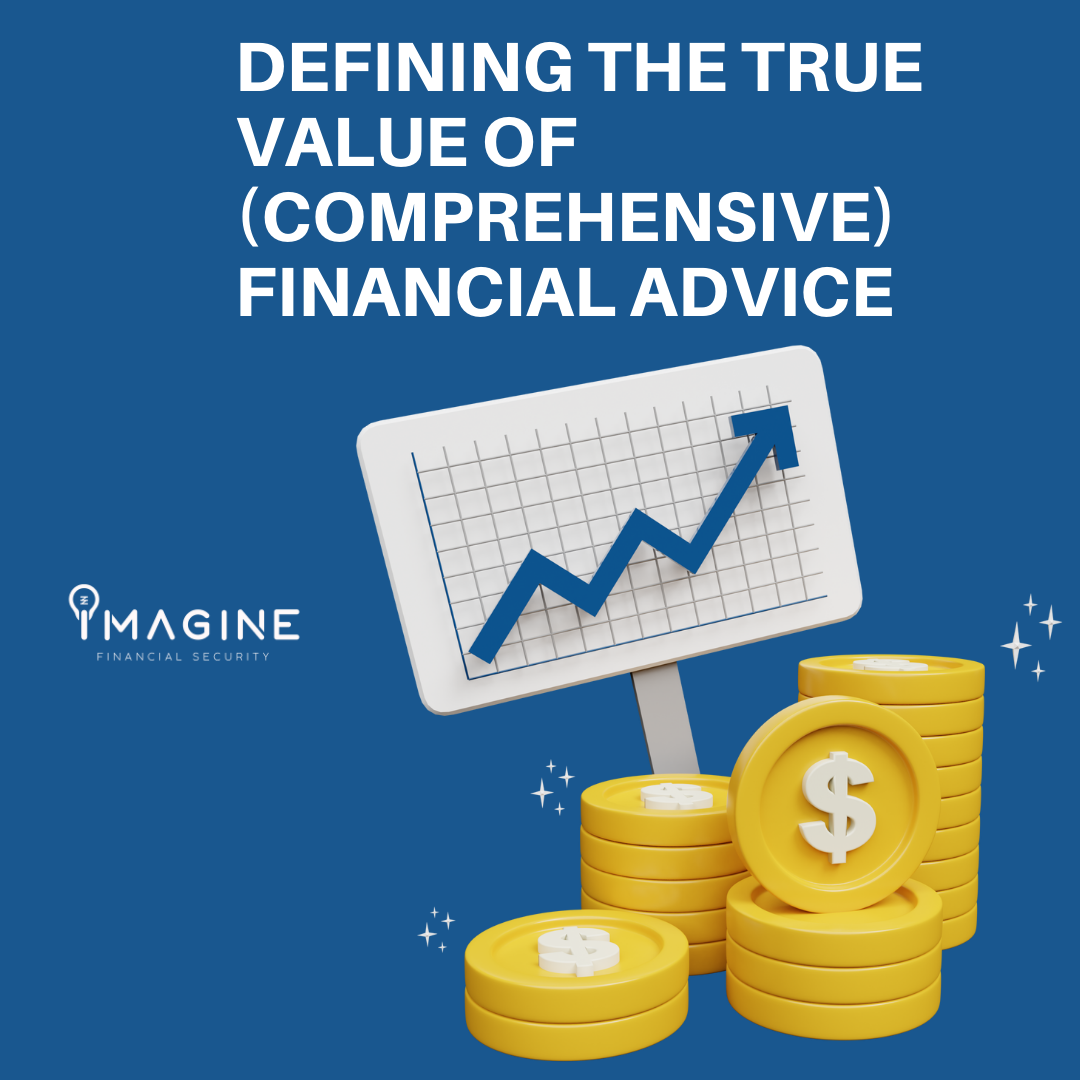
The 7 Most Tax Efficient Retirement Income Strategies
Tax efficiency maximizes retirement income!
When I started my first job as a soccer referee at 12 years old, my Mom used to tell me; “it’s not what you earn, it’s what you keep!”
I’m not sure if working at 12 years of age is legal any longer, but I’ve had a job ever since. My Mom instilled in me the value of forced savings and paying yourself first. (thanks, Mom!)
I’ve been practicing financial planning now for over 14 years, and I find this quote is highly relevant for taxes.
Tax inefficiency of retirement income is one of the biggest drags on returns. In fact, taxes are likely the largest expense for retirees, even more so than healthcare costs!
While we can’t control the stock market, we can control our taxable income (to a certain extent).
This article will outline the 7 most tax efficient retirement income withdrawal strategies so you can maximize spending on your lifestyle, not the IRS.
1. Roth IRAs + other Roth Accounts
As you know, this is one of my favorite tax efficient income strategies for retirement. Sure, you will forgo the tax deduction for contributions, but in exchange for a lifetime of tax free (“qualified”) withdrawals. I’ll take that tradeoff any day!
Here is the nuts and bolts of how these accounts work:
- You make a contribution (whether it’s payroll deductions with work or IRA contributions).
- You invest the money according to your goals and risk tolerance.
- Enjoy tax free withdrawals, assuming they are “qualified”:
- The account is at least 5 years old (for an IRA)
- You are 59 ½ or older
Your contributions in these accounts are always tax and penalty free, but you might have taxes and penalties on earnings if your withdrawal is “nonqualified.”
There are some exceptions like for first time home purchases, educations expenses, etc. But if you are reading this, these will likely not be of interest to you anyhow! Why would you cash in your most tax efficient retirement vehicle for anything other than retirement?
There are some limitations on these accounts.
Contributions:
- For Roth IRAs – the max contribution for 2022 is $6,000/year (if you are over 50, you can contribute $7,000/year)
- For a Roth 401k/403b – the max contribution for 2022 is $20,500 (if you are over 50, you can contribute $27,000/year)
These contribution limits are per person. If you are married, your spouse has their own limits to take advantage of.
Income phaseouts:
If you are over a certain income threshold, you might be phased out completely from a Roth IRA contribution (don’t worry, there may be a loophole).
Roth 401ks/403bs etc. are NOT subject to income phaseouts. You can make $1million/year and still max out a Roth 401k. Check out your 401k plan rules to see if there is a Roth option in lieu of the traditional.
Enter the backdoor and mega backdoor Roth contributions
In 2012, the IRS lifted the income limits for “Roth conversions.” A Roth conversion simply means you convert all or a portion of your Traditional IRA to your Roth IRA. You will then be responsible for any taxes due at that time. However, you may find this compelling based on your expectations on where taxes might go in the future.
Here’s the loophole…there is no income cap for non deductible IRA contributions. Therefore, savvy tax planners can make non deductible IRA contributions, and immediately convert those dollars into their Roth IRA! This is known as a backdoor Roth contribution!
Pro tip – be careful of the IRA aggregation rule or your conversion may not be tax free!
Now, companies are starting to allow for “Mega Roth 401k/403b conversions!” Depending on your plan rules, you can not only contribute the maximum to a Roth 401k, but you can make an additional non deductible contribution up to the 402g limit. That non deductible contribution can then be converted to your Roth 401k to enjoy tax free growth!
Sound too good to be true? Well, lawmakers are looking to shut this down ASAP, so take advantage while you can and read your plan rules to see if it’s allowed.

2. Health Savings Accounts (HSA)
Healthcare will likely be one of your largest expenses in retirement, so why not pay with tax free income?
In order to participate in an HSA, you must have a high deductible healthcare plan. Talk to your HR team about which plans allow for these accounts.
In general, if you are going to the doctor frequently or have higher than average medical bills, a high deductible health care plan may not be right for you. However, if you are pretty healthy and don’t go to the doctor often, you might consider it so you can take advantage of the tax free HSA.
HSA’s have a triple tax benefit:
- Tax deductible contributions
- Tax free growth
- Tax free distributions (if used for qualified medical expenses)
This triple tax benefit is the reason it’s one of the most tax efficient retirement income strategies!
You can also use an HSA to help pay for long-term care costs or even pay long-term care insurance premiums tax free.
Try not to tap into this account early
You might be tempted to reimburse yourself the year you have a major surgery or other medical bill. If you can pay out of pocket, do that instead! As your account grows, you can even invest it according to your risk tolerance and time horizon. This helps amplify the benefit of tax free compounding!
Save your medical bill receipts
There is no time limit on when you reimburse yourself. You could have surgery in 2022, and reimburse yourself anytime in retirement tax free!
Planning a major trip in retirement? Take a look at some medical bills you paid 20 years ago and reimburse yourself from the HSA…now you have more money to enjoy that trip instead of paying Uncle Sam!
Don’t leave this as a legacy
Your beneficiaries (other than a spouse) will have to liquidate the HSA the year you pass away, which could create an unnecessary tax bill for your heirs. Spend it while you can, name your spouse as beneficiary, and enjoy this triple tax advantaged account!
3. Life Insurance
Life Insurance is an often misunderstood, misrepresented, and misused financial tool for retirement. However, it can be used as a tax efficient retirement income strategy, or a tax efficient intergenerational wealth strategy (dual purpose!).
I started out with a life insurance company and am so thankful I did. First and foremost, I was taught to load up on life insurance while I was young and healthy (even before needing it), to lock in my insurability and health profile.
Secondly, I was taught the benefits of permanent insurance and loaded up on this as well. Again, before having any insurance needs at all!
Over time, the cash values have grown, and I’ve been able to tap into this asset class at opportune times when other asset classes were temporarily at a discount!
Ever hear of the concept “buy low, sell high?” Well, how do you buy low if all of your assets are down at the same time?
As we’ve seen with the market in 2022, bonds are not immune to significant drops in performance. Life insurance keeps on keeping on!
Long term, my plan is to keep the insurance as a tax free legacy for my three boys (and hopefully grandbabies!). There is no other financial vehicle that provides an amplified tax free death benefit like life insurance.
Which type of insurance should I own?
Raising children is expensive. Inflation has made it even more difficult! If you are strapped for cash and are worried about making rent or your mortgage on time, you should buy some inexpensive term insurance and protect your family.
Pro tips:
- Buy lots of coverage – a rule of thumb is 10x – 16x your gross income, but some insurance companies allow you to buy 25x your gross income!
- Make it portable. If you are healthy, buy a policy NOT tied to your workplace, as you never know how long you will stay there.
- Make sure it’s convertible. Even though you may not be a good candidate for permanent insurance today, that may change over time. Perhaps when your kids are out of the house, or your mortgage is paid off, or your income has skyrocketed. Being able to convert to a permanent policy without medical underwriting is extremely helpful.
For those of you comfortably maxing your tax advantaged retirement plans and HSA’s (as discussed previously), overfunding a permanent life insurance policy can be a great supplemental savings tool.
There are multiple flavors of permanent life insurance that we won’t go into detail on in this article. But in general, you can invest in fixed products or variable products. This feature will impact the performance of your cash value, and potentially your death benefit.
You can also add a long-term care rider on some policies to kill two birds with one stone. That way, if you are someone who never needs long-term care, your family will still receive the death benefit.
What I have found is that the intention might be to use this cash value as a tax efficient retirement income strategy, more often it’s used for the death benefit. All of you diligent savers will accumulate assets in your 401ks/IRAs, taxable brokerage, HSA’s etc., and you might realize that this amplified death benefit is best used to enhance your intergenerational wealth objectives. Plus, it gives you a license to spend down your other assets in retirement “guilt free.”
Don’t worry about making that decision today, but just know this asset can be a flexible vehicle throughout your lifetime.
4. Taxable Brokerage Accounts
This bucket is one of my favorite tax efficient retirement income strategies for three reasons:
- There is no income restriction on who can contribute
- There is no cap on contributions
- There is no early withdrawal penalty
The title of this account sometimes leads people to believe it’s not tax efficient.
And this can be true if you invest in certain securities within the taxable brokerage account.
However, if you are strategic with your security selection, you can have minimal tax liability during the accumulation phase.
In retirement, you can then use losses to offset gains, sell certain blocks of securities with limited capital gains, and use tax free income as cash flow by investing in municipal bonds (if appropriate).
I find this tool is great to maintain flexibility for funding college, saving for retirement, or any other major expenditures along the way.
Intergenerational Wealth Planning
Certain assets are better used during your lifetime instead of passing on to your heirs, as we discussed with the HSA. However, taxable brokerage accounts are extremely tax efficient for intergenerational wealth planning.
When you pass away, your beneficiaries will get a “step up in cost basis” which will limit their tax liability if/when they sell that asset themselves.
All in all, this can be a great multi functioning tool for retirement income, legacy, or any other major opportunity that comes along!

5. Non Qualified Annuities
I find consumers have a negative connotation associated with the term annuity. And, rightfully so. These products, like life insurance, are often oversold or inappropriately utilized.
In it’s purest form, annuities are used to provide a guaranteed income stream in retirement. Think Social Security or a Pension.
Creating a “retirement income floor” is one of the most powerful things you can do for yourself. Believe me, when the markets go south, you don’t want to be worried about how to fund your basic living expenses in retirement.
However, if Social Security + Pension + Annuity income covers your basic necessities, you can avoid losing sleep at night when the markets do take a dive (which they will!).
The tax efficiency components are twofold:
- Tax deferred growth, much like a traditional 401k or IRA
- Exclusion ratio for lifetime annuity income
For you high income earners, you will want to limit tax drags on your savings. However, once you are maxed out of your qualified retirement plans, you’re going to be wondering where to go next. One of the benefits for annuities is the tax deferred growth. You won’t receive a 1099 until you start the income payments in retirement!
In retirement, instead of the gains being withdrawn first (“LIFO”), you can take advantage of the exclusion ratio. This allows for a portion of your retirement income to be a return of basis, and a portion to be taxable income. Therefore, it’s a great way to spread the tax liability over your lifetime.
In retirement, if you decide you don’t need this income stream, you can flip on the switch to fund other tax efficient vehicles like life insurance or long-term care insurance.
Intergenerational Wealth Planning
In years past, annuities were a terrible way to leave a legacy for your children. Beneficiaries were often forced to take a lump sum distribution or take payments over a short period of time. Now, some annuity contracts allow for the children to turn their inherited annuities into a life income stream. This can also help spread out the tax liability over a much longer period.
I still recommend using these accounts during YOUR retirement phase and leave other assets to your children. Having your beneficiaries deal with the death claim department within annuity companies can be a nightmare!
6. Reverse Mortgage
One of the largest, if not the largest, asset on your balance sheet over time will be home equity. However, many retirees don’t maximize their home equity as an income tool, which could be a mistake.
In simple terms, a reverse mortgage allows the homeowner to stay in their home as long as they live. These products essentially flip your home equity into an income stream. The income stream now becomes a loan with your home as collateral.
Because it’s a loan, the income is not taxable to the borrower!
Instead, the loan will be repaid from the home sale proceeds when you move, sell your home, or pass away.
Creating this essentially tax free income stream can allow you to preserve other liquid assets on your balance sheet, like the ones mentioned above.
It can also be a part of the “retirement income floor” concept that we mentioned previously.
7. Real Estate Income
You often hear of real estate investors paying little to no taxes. The basic reason is the ability to deduct ongoing expenses from the income.
- mortgage payments
- taxes
- insurance
- maintenance
- property management fees
- And the “BIG D” – Depreciation!
This depreciation expense is the real wildcard as it can essentially wipe out any taxable income you would otherwise have to report. Depending on the property type, this can amount to approximately 3.6% of the cost basis year after year! There is some “true up” at the end when you go to sell the property, but it’s a huge advantage to minimize taxable income while your property still cash flows!
And once you sell the property, you can even take advantage of a 1031 tax free exchange and buy another investment property that better suits your overall financial goals.
Investing in real estate is not for everyone. And it’s certainly not a passive activity, even if you have a property manager. Studying your market, analyzing trends, upgrading your property and dealing with bad tenants are ongoing challenges.
However, if you do it right, this can be an extremely tax efficient retirement income strategy.
Final word
Minimizing taxes in retirement is one of the most impactful ways to maximize your cash flow!
However, most people don’t think about taxes in retirement…until they are about to retire!
These strategies only work if you begin building the framework 10, 20 or even 30 years before you quit your day job. Furthermore, not all of the strategies discussed will make sense given your goals and financial circumstances.
It’s important to consult with a fiduciary financial advisor that can take a comprehensive look at your financial plans.
If you are interested in scheduling a call, feel free to use the calendar link below for a 30 minute “Mutual Fit” meeting over Zoom.
Also, make sure to subscribe to our mailing list so you don’t miss out on any retirement planning insights!
Until next time, thanks for reading.
-Kevin



























